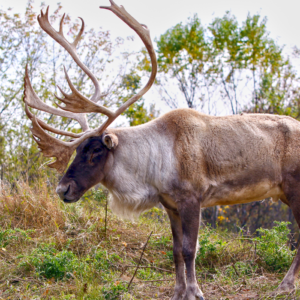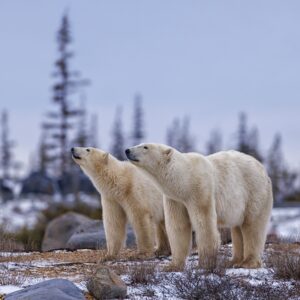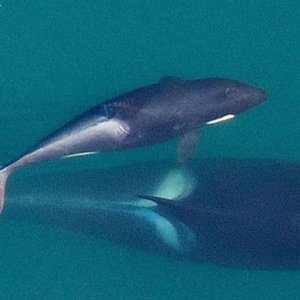The Greater Sage-Grouse
The Greater Sage-Grouse is an endangered bird that lives in the Alberta, Saskatchewan regions within Canada, and in the Western states for the United States of America. The bird was once found in the province of British Columbia but has been extirpated for over a century. This bird is brownish-gray, plump, chicken-like, with white patterning. It has a long spiky pointed black-and –white tail and a black belly.
The males can weigh about 4.5lbs, and the females about 2.2lbs. Surprisingly, this Grouse is the largest in North America!
The Greater Sage-Grouse lives in the prairies, but has been seeing terrible declines to their habitat within the last 10 years. The Greater-Sage Grouse is limited to its habitat because it prefers lower wet areas, where the young can forage for insects. Also, their diet heavily consists of sage leaves and buds, so they can only survive where the sagebrush is found. The degradation to their habitat can be linked to:
- Conversion of habitat to farmland and intensive livestock grazing;
- Oil and gas development near leks;
- Oil and gas wells and associated pipelines destroying sagebrush habitats;
- Drainage and irrigation projects: the development of dams, dugouts and reservoirs increased fourfold in southeastern Alberta between 1951 and 2001, meaning more than 80% of the Greater Sage-Grouse range was altered.
The ‘lek’ is the critical area needed for breeding, also acting as central hubs for the majority of their activities.
Luckily, in an unprecedented decision, the federal government, in 2013, announced that they would introduce an Emergency Protection Order to help save this prairie-dwelling Greater Sage-Grouse. This came after 2008, when public engagement and private consultations shed widespread awareness of the issues that this species is facing. This Emergency Protection Order plus the recently designated Protected Area of Govenlock, are two steps that are were much needed to help the Greater Sage-Grouse survive their habitat degradation, and begin to reproduce successfully again.
Govenlock is a region in southwest Saskatchewan where many of the species are found. Govenlock has recently become a designated area. This step was crucial in the designation of Govenlock as a National Wildlife Area. Govenlock’s luscious grasslands, the only suitable habitat for this bird, are now protected, and the Greater Sage-Grouse as a result!
The Emergency Order for the protection of the Greater-Sage Grouse was issued by the Minister of the Environment, backed by the Governor General in Council, based on the opinion that the Greater Sage-Grouse is facing imminent threat to its survival and recovery. Following this Emergency Protection Order, the following activities are now prohibited:
- Killing or moving sagebrush plants, native grasses or native forbs in a legal subdivision or road allowance
- Constructing and/or installing a fence in a legal subdivision or road allowance
- Constructing a new road, or widening a road that is in the protected area
- Operation of a facility, motor vehicle or machine that produces noise that exceeds 45 dB(A) (equivalent to the noise found in a library) at any given time between 1.5 hours before sunset to 1.5 hours after sunrise during the months of early April to end of May.
These prohibitions do not apply to people engaging in activities related to public safety or health, or to the health of animals and plants, and that are authorized under provincial law.
It is important to remember that just because we do not see this animal every day, that it matters just as much as any other species at risk. It is up to us to save the Greater Sage-Grouse by changing mankind’s destructive ways! Share this information with your friends and family so that they can know the progress that has been made, and what they can do to help. The Greater Sage-Grouse would greatly benefit if each and every one of you reduced your ecological footprint.



